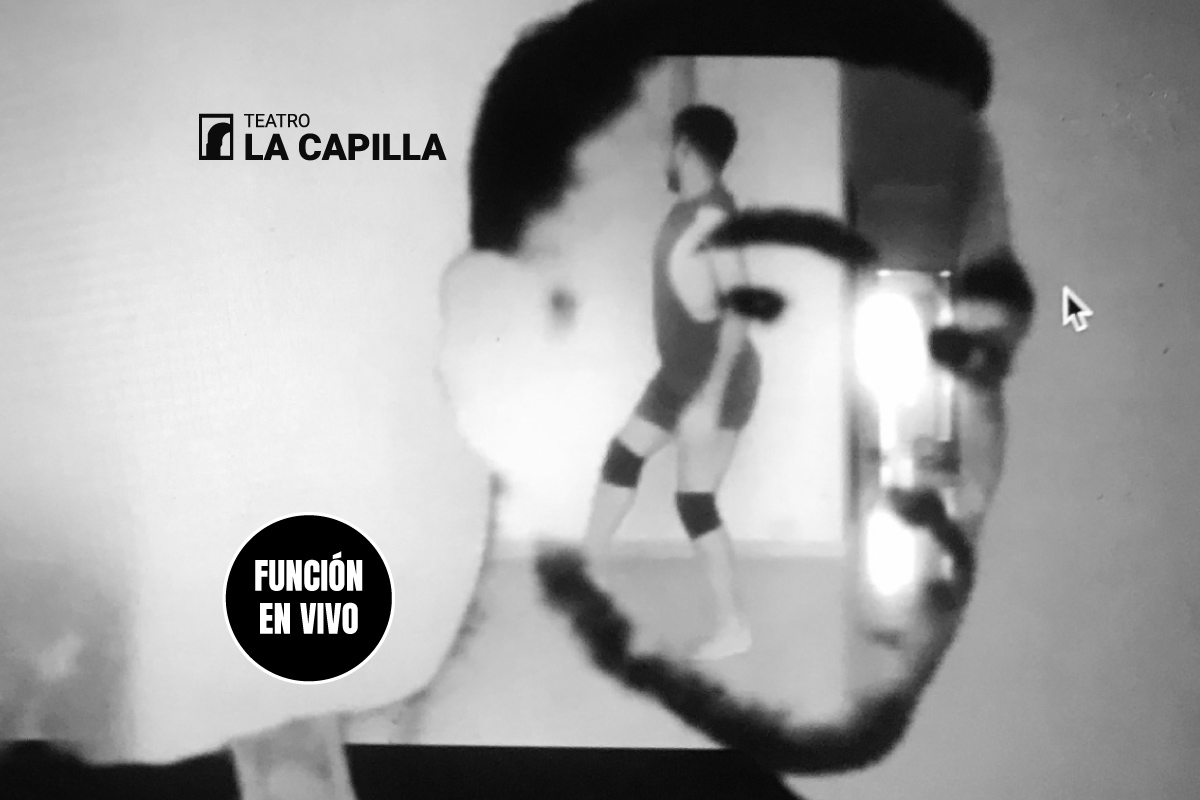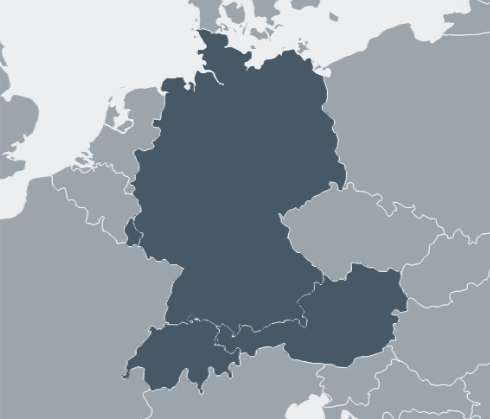Mexican theater in pandemic times: discovering digital technology, shying activism
The theatrical republic of the few
by Gastón A. Alzate
23rd of September 2021. As of July 2020, Mexico allowed the reopening of theaters maintaining a capacity between 20% and 30%. This gave relief to the theater, although it was insufficient since due to the pandemic approximately two million theater workers entered into economic uncertainty producing losses of one billion pesos (Sector’s turnover) turnover (42 million euros). In the case of independent theater, the sector estimates that there are more than 300 such spaces in Mexico City (0) and all are at risk of disappearing (1).
An old antagonism
The pandemic has accentuated the precarious situation of culture in its relationship with the government, a progressive government in ideology, but with cold war dynamics in practice. This model has been denounced as an attempt to return to the national revolutionary past of the PRI (Partido Revolucionario Institucional) that ruled the country for 70 years. (2) The model copies the antagonism between bourgeois and proletarian art of "socialist realism", which in the case of Mexico has functioned as a red herring to divert the people from the precarious situation of indigenous people, undocumented immigrants, femicides and to date (August 2021) 54.000 deceased from Covid.
 Conchi León's "Cachorro de León" © Instituto Cultural de León
Conchi León's "Cachorro de León" © Instituto Cultural de León
In this way Mexico has built an executive apparatus that harasses independent institutions, practices suicidal austerity, grants more power to the military and cultivates the messianic cult of the president (Andrés Manuel López Obrador). This situation has ended up by inflaming the tempers of many theatrical people, the majority of whom voted for the current government in the last elections.
New theatre productions and the use of Zoom
To speak of changes during the pandemic, we must focus on the plays that have worked in hybrid formats. In these proposals, mostly from university and independent theater, we appreciate the intervention of dynamics that reevaluate the traditional tools of theater. Some directors such as Mario Espinosa envision "a change in the theatrical paradigm" (4). Boris Schaumann speaks of a "theater within the theater", referring to the conviviality between spectators and actors that is presented by ZOOM after the plays. It resembles a horizontal situation with democratic overtones due to the possibility of unlimited spectators, generally without technicians, with a camera with its own point of view and with actors working from their own homes. The stagings have been very close to live cinema, with close ups and open shots.
 Claudia Lavista's "Telempatías" © Teatro La Capilla
Claudia Lavista's "Telempatías" © Teatro La Capilla
Some examples were Rocío Carrillo's Otra Electra (5) and ¿Duermen los peces? by the company Teatro ReNo. In the cycle of monologues of the Foro Teatral independiente Área 51 in the city of Xalapa, combining randomness and technology, several actresses addressed the spectator through individual video calls without a fixed schedule with the ephemeral characteristics of live theater. In some monologues a camera was presented from the outside trying not to have a point of view. In the monologue Todo lo que está a mi lado by Fernando Rubio, it was used in the intimacy of the character. At the same time, Conchi León presented her one-person play Cachorro de león on video, supported by a black and white camera through the eyes of a four-year-old girl who holds her father to account for his behavior during her childhood. (6) In Claudia Lavista's Telempatías, a choreographic experiment of the artisan-digital type was proposed, under a live improvisation structure from the homes of eight stage creators. (7)
New curatorial ideas
The approach through ZOOM has allowed to find a new sense of travel options and the contact to groups from different regions of the country. This has led to a greater knowledge among theater professionals. The "Maratón de Cabaret" that the International Cabaret Festival organized by Reinas Chulas was turned into is noteworthy. It was a two-day marathon of conferences, workshops and plays transmitted via Facebook, with the participation of artists from all over Latin America. The marathon had a much larger audience than usual.
 "Otra Electra" by Rocío Carrillo © Screenshot Facebook
"Otra Electra" by Rocío Carrillo © Screenshot Facebook
In some independent theaters, programming during the pandemic has been more agile and creative, introducing new curatorial ideas by being able to suggest changes to the proposals to adapt them to virtuality.
The academic offer has expanded. Some companies or theaters use web pages where classes are offered, such as the Delfos TV project. The focus of directing and acting workshops is now on voice projection for the microphone, or face or body movement in front of the camera, and auditions for plays are done by ZOOM. It is very likely that when the pandemic is over theater schools will use hybrid (face-to-face/virtual) programs. This phenomenon is in tune with platforms to talk about theater that existed before the pandemic and have intensified as is the case of podcasts such as Pequeñas dosis, Para fernalia, or Tenemos que hablar... de Teatro.
Great doubt
The great doubt that has arisen in the theatrical environment is that with the pandemic the power structures of face-to-face theater have been transferred to the virtual scene. In practice, the technologies have only been used by the consolidated spaces. There has been no digital autonomy as such on the part of the artistic community. The ZOOM conversations only replace the final applause of the old live works. Although the personal websites of actors and directors have increased, their audience is limited. This leads us to the conclusion that in the context of Mexican theater, virtual access is not as democratic as has been pointed out.
A second fear refers to the fact that the "theatrical republic", an idea that some directors have recovered from the 80s and 90s, to talk about the new paradigms, is more similar to Plato's republic (exclusively for the citizens of the polis). We are in the pandemic in the presence of a "bourgeois democratization" of technology, only for those theaters who have the resources to access this so called "theatrical republic".
 Installation against femicide in Mexico City in July 2020 © Mario Marlo
Installation against femicide in Mexico City in July 2020 © Mario Marlo
A third concern has to do with the fact that university and independent theater is still numb to issues that are truly critical of the government, such as the case of femicides. Although there is no deliberate censorship, these works do not have the possibility of being part of the program because they are not selected by the curators.
The fourth concern is the oversaturation of online theater in Mexico, which has produced a greater economic devaluation of theatrical work. What will the theatrical artist live on in the virtual world he is creating? What are the legal loopholes that the pandemic will leave in terms of copyrights, royalty payments, monetization of the audiovisual product, and above all: if before the presence of the audience was essential, what is it now?
The pandemic has coincided with an unprecedented women's rebellion in Mexico, which has taken various theatrical forms against patriarchal violence. These political performances have shaken the country by following examples of strategies used by emancipatory women's movements to confront the social order - such as the British suffragettes at the beginning of the 20th century in Europe.
Young Mexican women have held festive and creative marches, artistic performances, circus acts, painted iconic monuments, taken over and painted schools, displayed photographs of missing or murdered women, or of women wearing masks who have set fire to the Mexican flag under the slogan: "no country, no party, no husband".
There is no doubt that the combativeness of the "morras" ( 8) is proportional to the violence to which young women are exposed. During the pandemic this phenomenon has exacerbated.
Mexican academic and institutional feminism has been surpassed by this phenomenon since they are not theoretical feminists but experiential feminists. (9)
Very likely, the nearest future of Mexican theater lies in the search for new methodologies and technologies to reach communities who are far from the dramatic arts, but who live the social "drama" of living in Mexico.
Footnotes
0 Most of the article is focused on the Capital city because it has the most significant theatrical production.
1 Moreno, Violeta. " A un año de la pandemia, algunas obras operarán con una capacidad de 20 por ciento"
Milenio, febrero 28, 2021
https://www.milenio.com/cultura/escenario/covid-19-obras-teatro-operaran-capacidad-20
2 Roger Bartra, Regreso a la jaula, Debate, 2021.
3 "Mapa de coronavirus en México". New York Times May 25, 2021.
4 "Artistas de teatro en México se reinventan ante pandemia de coronavirus". https://www.chicagotribune.com/espanol/entretenimiento/sns-es-coronavirus-teatro-mexico-pandemia-20200331-ih4duqdtpngctavsishnquer5y-story.html
5 "Otra Electra, teatro virtual desde casa". El universal, cultura. 13/02/2021. https://www.eluniversal.com.mx/cultura/otra-electra-teatro-virtual-desde-casa
6 Ibarra, Juan. "Conchi León presenta en línea su monólogo Cachorro de León". La jornada, 8 de marzo de 2021. https://www.jornada.com.mx/notas/2021/03/06/cultura/conchi-leon-presenta-en-linea-su-monologo-cachorro-de-leon/
7 Quijas, Fabiola Palapa. "Delfos ha descubierto enormes posibilidades en el mundo digital, reconoce Claudia Lavista". La jornada, 11 de julio de 2020 https://www.jornada.com.mx/2020/07/11/cultura/a03n1cul.
8 “Morras" is the colloquial name given to young women in Mexico and how these radical feminists define themselves.
9 Castellanos, Laura. "La rabia de las jóvenes feministas cimbra al gobierno de AMLO". Washington Post. March 6, 2020. https://www.washingtonpost.com/es/post-opinion/2020/03/05/la-rabia-de-las-jovenes-feministas-cimbra-al-gobierno-de-amlo/
Translation from Spanish: Claudia Daseking
Gastón A. Alzate is from Valle del Cauca, Colombia. Currently he is Full Professor of Contemporary Mexican Theater and Latin American Literature in California State University-Los Angeles. Previously, he was founder and director of Latin American, Latino, and Caribbean Studies (LALACS) at Gustavus Adolphus College, Minnesota (1997-2006). Before coming to the United States, he worked at Universidad Javeriana and Universidad del Rosario, and as an Art Critic for the Sunday Magazine of daily El Espectador, and the Revista Arte Internacional of the Museo de Arte Moderno, in Bogotá. In 1993 he won the National Essay Prize of the Colombian Ministry of Culture. In 2017 he was the Latin American Theater Review Cátedra Woodyard recipient, University of Kansas. In 2011 he was a Resident Researcher at The International Research Center "Interweaving Performance Cultures" at Freie Universität Berlin.
This article is a part of a cooperation between the international research hub "Interweaving Performance Cultures" of Free University Berlin (editors: Clara Molau, Antonija Cvitic) and nachtkritik.de (editor: Elena Philipp).
So far articles have been published about the theatre scenes in Argentina, Chile, Egypt, Uruguay, South Africa, Turkey, Japan, China and Iran.
In Cooperation with
![]()
Für Horizonterweiterung
Der Blick über den eigenen Tellerrand hinaus ist uns wichtig. Wir möchten auch in Zukunft über relevante Entwicklungen und Ereignisse in anderen Ländern schreiben. Unterstützen Sie unsere internationale Theaterberichterstattung.
meldungen >
- 27. April 2024 Theater Rudolstadt wird umbenannt
- 26. April 2024 Toshiki Okada übernimmt Leitungspositionen in Tokio
- 26. April 2024 Pro Quote Hamburg kritisiert Thalia Theater Hamburg
- 25. April 2024 Staatsoperette Dresden: Matthias Reichwald wird Leitender Regisseur
- 24. April 2024 Deutscher Tanzpreis 2024 für Sasha Waltz
- 24. April 2024 O.E.-Hasse-Preis 2024 an Antonia Siems
- 23. April 2024 Darmstadt: Neuer Leiter für Schauspielsparte
- 22. April 2024 Weimar: Intendanz-Trio leitet ab 2025 das Nationaltheater








neueste kommentare >